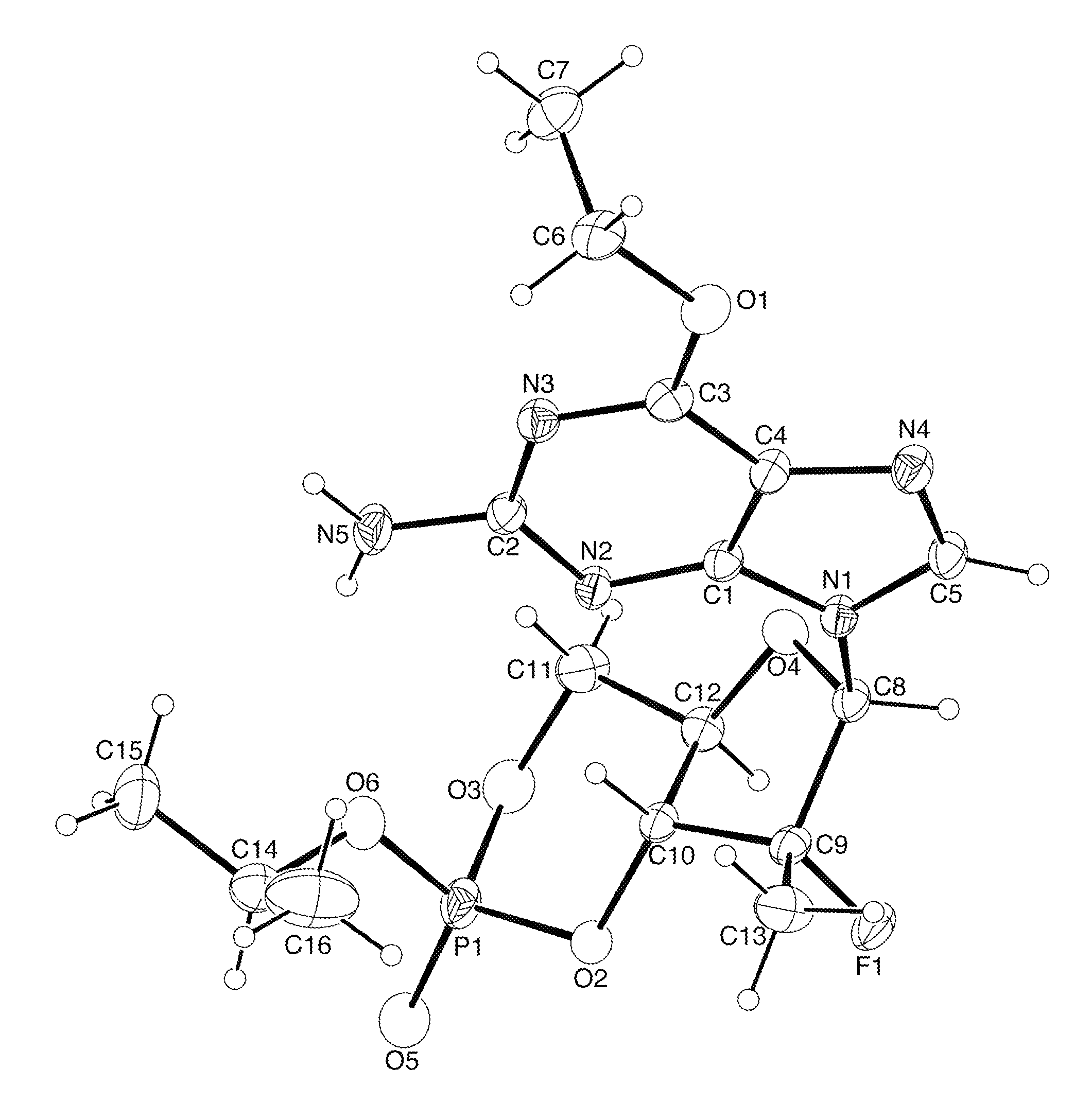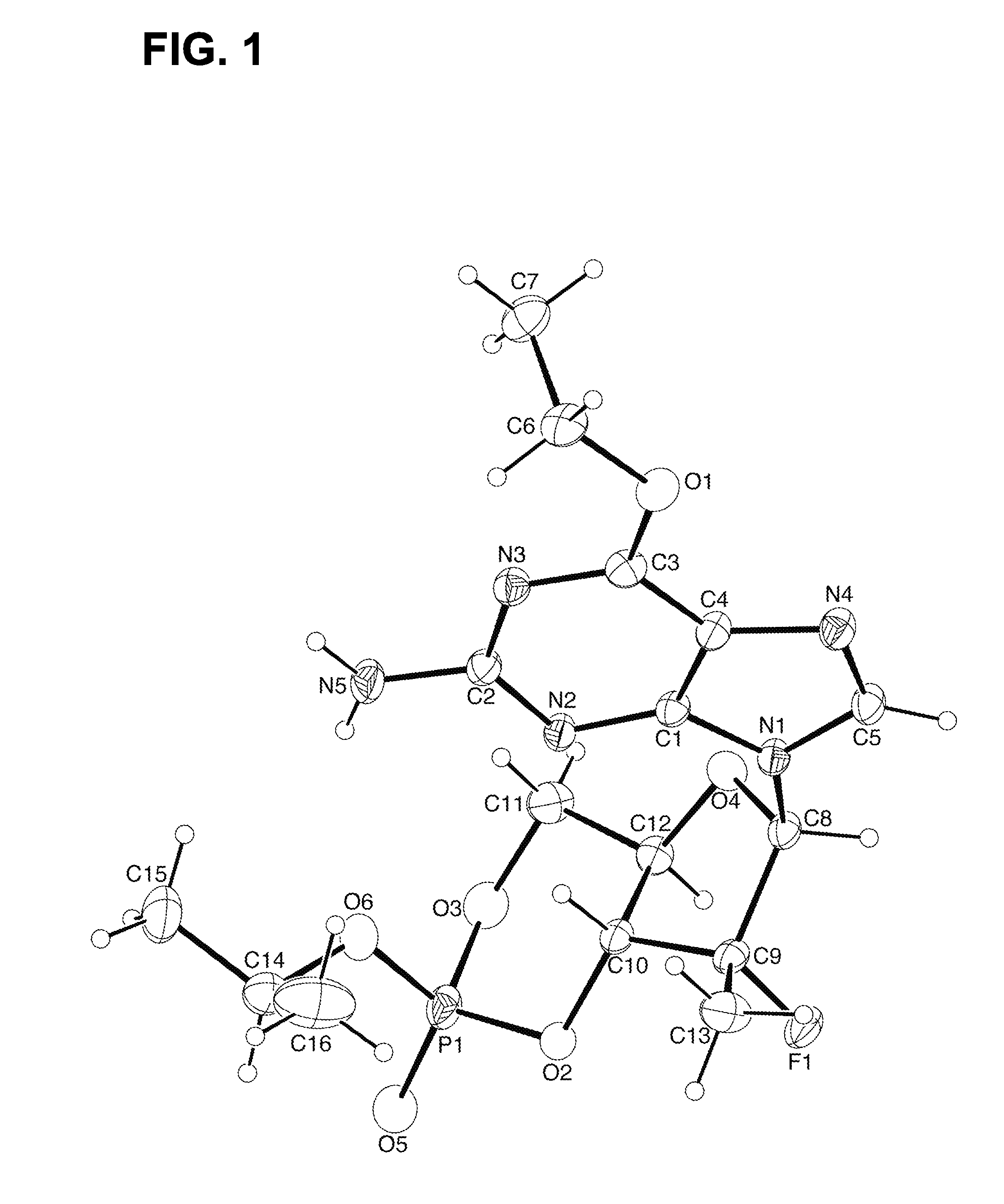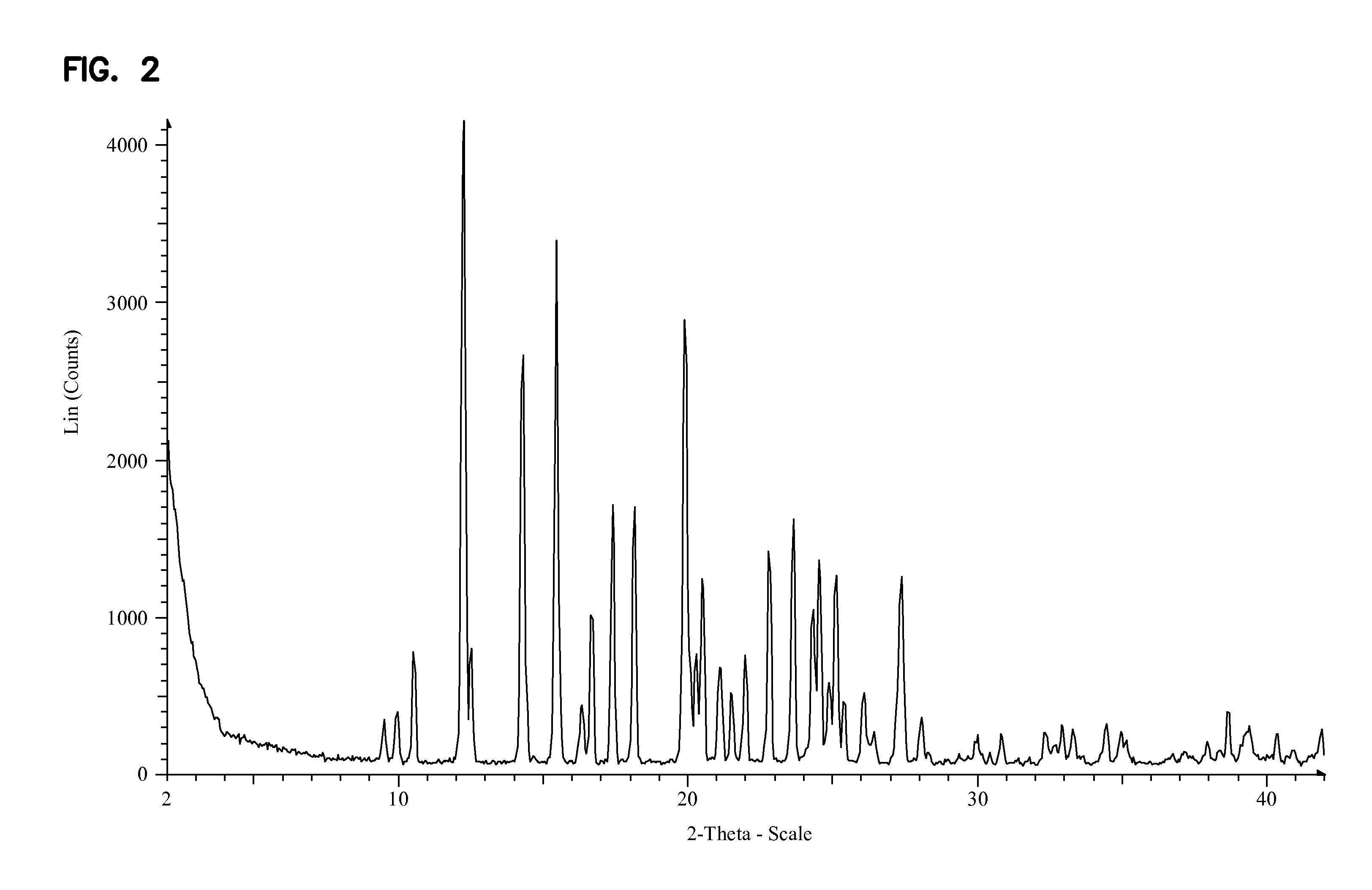Synthesis of purine nucleosides
a technology of purine nucleosides and nucleosides, which is applied in the field of purine nucleoside synthesis, can solve the problems of limited clinical benefit, no established vaccine for hcv, and treatment of hcv infection
- Summary
- Abstract
- Description
- Claims
- Application Information
AI Technical Summary
Benefits of technology
Problems solved by technology
Method used
Image
Examples
example 1
((2R,3R,4R)-3-(4-chlorobenzoyloxy)-4-fluoro-4-methyl-5-oxotetrahydrofuran-2-yl)methyl 4-chlorobenzoate (1b)
[0555]((2R,3R,4R)-3-(benzoyloxy)-4-fluoro-4-methyl-5-oxotetrahydrofuran-2-yl)methyl benzoate (1a, 44.50 g, 119.5 mmol) was suspended in anhydrous methanol (240 mL). A catalytic amount of 25 wt. % sodium methoxide in methanol (2.3 mL, 10 mmol, 8.3 mol %) was added at room temperature. After 2 h, the reaction was complete as shown by TLC (20% EtOAc in hexanes). After concentration of the solvent under reduced pressure, the residue was triturated with a mixture of ethyl ether and hexanes (1:2 v / v) (200 mL) to afford crude intermediate lactone, a. The solid was collected via filtration and rinsed with hexanes (3×40 mL). To a dry 1 L of round flask was loaded the crude intermediate and it was dissolved in anhydrous THF (500 mL). 4-Chlorobenzoyl chloride (46 mL, 358 mmol) was added at room temperature. The mixture was cooled in an ice-water bath and then triethylamine (100 mL, 717 mm...
example 2
((2R,3R,4R,5R)-3-(benzoyloxy)-4-fluoro-5-hydroxy-4-methyltetrahydrofuran-2-yl)methyl benzoate (2a)
[0556]To a 5 L of dry three-neck round-bottomed flask fit with a mechanical stirrer, addition funnel and thermometer was charged the lactone ((2R,3R,4R)-3-(benzoyloxy)-4-fluoro-4-methyl-5-oxotetrahydrofuran-2-yl)methyl benzoate) (1a, 379 g, 1.018 mol). The solid was dissolved in anhydrous THF (1.75 L) and cooled to −30° C. under a nitrogen atmosphere. A solution of lithium tri-tert-butoxyaluminohydride (1.0 M in THF, 1.527 L) was added to the lactone solution while stirring over 1 h and maintaining the −30° C. temperature. After finishing the addition, the temperature was slowly increased and the reaction was followed by TLC (lactol Rf 0.4, 30% EtOAc in hexanes). The reaction was complete after 1 h 15 min (temperature reached −10° C.). The reaction was quenched by addition of Ethyl acetate (900 mL) via addition funnel. Sat. NH4Cl (40 mL) was added at 0° C. The cloudy mixture was decante...
example 3
((2R,3R,4R,5R)-3-(4-chlorobenzoyloxy)-4-fluoro-5-hydroxy-4-methyltetrahydrofuran-2-yl)methyl 4-chlorobenzoate (2b)
[0559]To a 1 liter dry round-bottomed flask was loaded ((2R,3R,4R)-3-(4-chlorobenzoyloxy)-4-fluoro-4-methyl-5-oxotetrahydrofuran-2-yl)methyl 4-chlorobenzoate (1b, 50.0 g, 113 mmol) and the solid was dissolved in anhydrous THF (200 mL). The solution was cooled to −20° C. Lithium tri-tert-butoxyaluminohydride (1.0 M in THF) (170 mL, 170 mmol) was added via an addition funnel over 20 min and the resulting mixture was stirred for an additional one hour at −20° C. Ethyl acetate (120 mL) was added and the mixture was allowed to warm up slowly to 0° C. Sat. aq ammonium chloride (4.5 mL) was added. The mixture was concentrated under reduced pressure and then diluted with EtOAc (500 mL). Aqueous HCl (3 N, 300 mL) was added to dissolve all solids. After separation, the organic layer was washed with water (2×200 mL), brine (100 mL), and dried over sodium sulfate. The organic layer ...
PUM
| Property | Measurement | Unit |
|---|---|---|
| Temperature | aaaaa | aaaaa |
| Volume | aaaaa | aaaaa |
| Volume | aaaaa | aaaaa |
Abstract
Description
Claims
Application Information
 Login to View More
Login to View More - R&D
- Intellectual Property
- Life Sciences
- Materials
- Tech Scout
- Unparalleled Data Quality
- Higher Quality Content
- 60% Fewer Hallucinations
Browse by: Latest US Patents, China's latest patents, Technical Efficacy Thesaurus, Application Domain, Technology Topic, Popular Technical Reports.
© 2025 PatSnap. All rights reserved.Legal|Privacy policy|Modern Slavery Act Transparency Statement|Sitemap|About US| Contact US: help@patsnap.com



